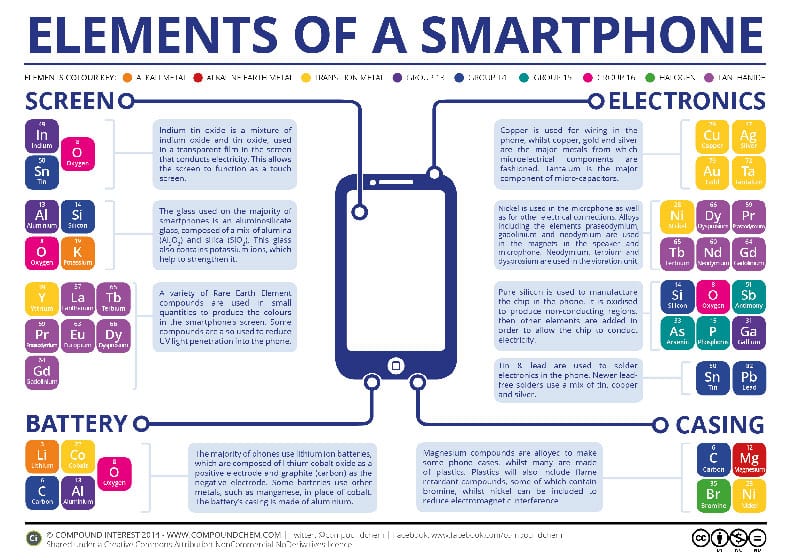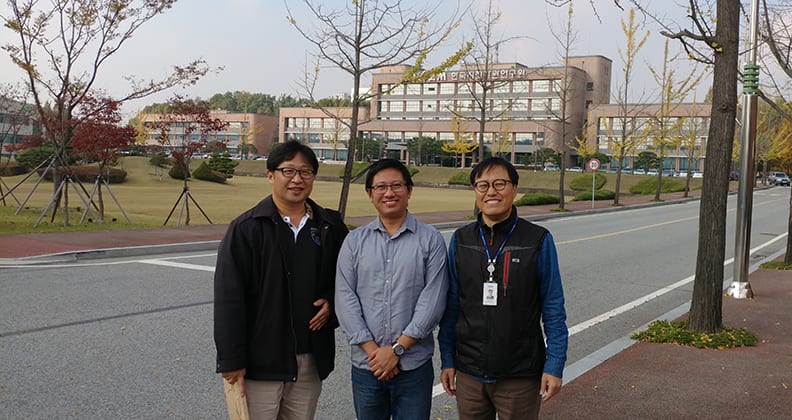A Curtin scientist is collaborating with a South Korean production company to research a new method of recovering precious metals hidden in discarded smartphones and other end-of-life consumer products.
Go to any landfill and you’ll discover a sea of waste, but it’s a sea that hides a treasure trove of precious metals. A smashed computer could reveal a central processing unit lined with gold. A broken monitor could expose a cathode ray tube composed of copper. And these precious metals can all be mined, if treated correctly.
For some countries, it’s reasonable to say this unorthodox source may act as a lifeline. This is particularly true for South Korea, which imports 99.3 per cent of its metals due to a scarcity of natural resources.
In recent years, the country has been increasing its so-called ‘urban mining’ activities to help satiate its population’s demand for the latest technologies – the country’s 51 million people boast the highest rate of smartphone ownership in the world – however the method used to recover precious metals from end-of-life consumer products still needs some refining.

Chemical elements in a smartphone (credit: Compound Interest 2014, shared under a Creative Commons Attribution-NonCommercial-NoDerivatives licence). Click photo to enlarge.
At the moment, the precious metals contained in these ‘urban mines’ are dissolved using acidic or alkaline solvents, but as they are often found with unwanted components, the solution is considered ‘dirty’. So what is the best way of extracting the precious metals? Curtin WA School of Mines researcher Dr Richard Alorro may hold an answer.
“My research proposes a method called ‘Magnetic Solid Phase Extraction’. The precious metals are recovered by adsorbing onto a solid material with magnetic properties and then the loaded adsorbents are harvested, then stripped of the precious metals,” he explains.
“The precious metals – now relatively pure – undergo further refining to produce individual metals, such as gold or platinum bars, and the adsorbent is treated and re-used.
“The advantages of this method include the fact that magnetic adsorbents can be easily separated from the mixture using a magnet, high selectivity means the adsorbents take only precious metals and their high capacity means they can load a considerable amount of precious metals per unit area or mass.”
Alorro began researching urban mining activities in South Korea after he was successful in the first round of federally funded priming grants, which seeks to connect Australian researchers with small and medium-sized enterprises in select countries around the world.
His three-year project, ‘Selective Recovery of Gold and Other Precious Metals from Urban Mines’, will see him collaborate with Danam-ENE Co. Ltd., a South Korean production company that is best known for its water filtering, purification and electrolysis system products, to develop a new purification method for recovering precious metals.

Alorro notes his project is just one of the many areas being looked at closely by researchers in South Korea in response to the country’s natural resources scarcity. He is pictured here (centre), beside Dr Youngmin Oh of Danam-ENE Co. Ltd. (left) and Dr Sooo Kyung Kim of Korea Institute of Geoscience and Mineral Resources (right).
If successful, Alorro believes he might further help to prove the financial benefits of urban mining, and not just in South Korea. A recent journal article in Minerals Australia has found that in 2014 only 65 per cent of electronic waste in Australia was collected for recycling.
“In this day and age, where technology advances at a rapid pace and becomes obsolete quite easily, the end-of-life of many consumer products has become significantly shorter. In return, the world is generating massive amounts of urban wastes, which is posing major challenges in terms of waste management, environmental and health hazards and availability of resources,” Alorro explains.
“Urban mining is the mining of the future. When all metals, fuel and other natural resources are exhausted from the Earth’s crust, where else are we going to get the materials we need to sustain life?”



